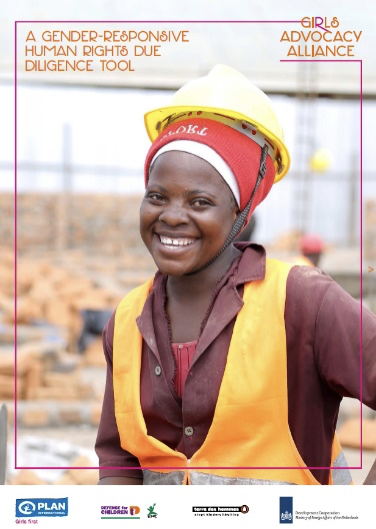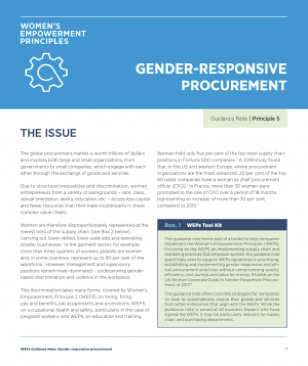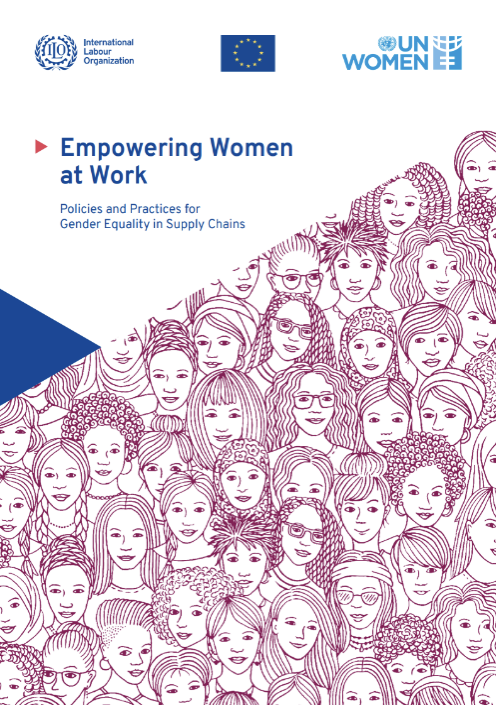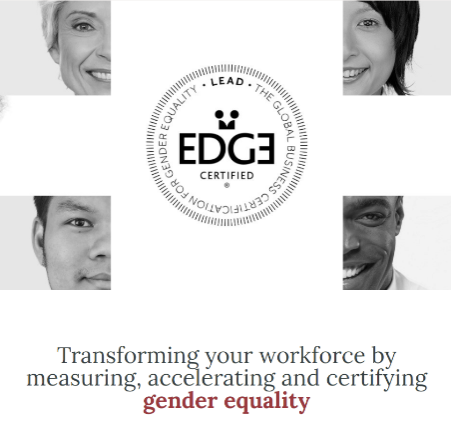The first step of GRDD is to establish a gender-responsive policy framework aimed at respecting human rights, including women’s rights, labour rights, and the environment which complies with national and international laws and regulations. Practically, this means that companies evaluate and revise current policies and develop new ones if needed. Supply chain relationships and activities of other business partners should be covered in the policy framework. It is important to engage suppliers in this process and support any needs for capacity building to ensure that they too have strong policies and management systems.
A strong commitment to GRDD at a company’s leadership level communicates that human rights are important and need to be looked at with a robust gender lens. It also shows that non-compliance is unacceptable. The tone set by corporate leadership and senior management influences the actions of lower-level managers and supervisors, employees, and supplier networks. It also ensures that all stakeholders have a common understanding about the company’s position on the importance of gender and human rights, and are empowered to take action where necessary. Step 1 can be divided into three actions:
- Design and implement gender-responsive policies on human rights issues that articulate the company’s commitments to these issues;
- Embed these policies into management systems to ensure that they are implemented as part of the regular business processes;
- Incorporate expectations and policies on human rights, including specific reference to women’s rights, into engagement with suppliers and other business relationships.
1. Design and implement gender-responsive human rights policies
A gender-responsive policy framework should incorporate the standards against which GRDD is to be conducted, adhering to national and international standards and laws. It can consist of one single policy or several stand-alone policies.
The policy framework should:
- recognise that human rights risks, labour risks, and environmental risks impact people, and more specifically women, differently;
- have a strong commitment to conducting GRDD;
- be approved at the most senior level of the company. Senior level responsibility should be assigned for its implementation;
- be informed by relevant internal and external expertise, including gender expertise, and stakeholder consultations;
- stipulate the company’s expectations of employees, business partners and other parties directly linked to its operations, products or services
- be publicly available and communicated to all employees, suppliers and other business partners;
- be reflected in operational policies and procedures necessary to embed it throughout the enterprise;
- be reviewed and improved on a regular basis in response to developments in GRDD and international standards.
A company’s policy framework on human rights issues often includes the following policies:
- Human Rights policy
- Global Grievance policy
- Global Health and Safety policy
- Responsible Marketing policy
A company’s gender-responsive policy framework on human rights issue could include the following policies:
- Human Rights policy that deliberately refers to gender as a priority and considers how there are gender-specific impacts of human rights risks.
- Global Grievance Policy with an added focus on how gender influences the type and impact of grievances that can occur and what grievance mechanisms and procedures should look like to ensure they are safe and accessible to women.
- Global Health and Safety policy which specifically considers maternal health and how safety issues could affect women differently.
- Responsible Marketing including a commitment to combat gender stereotypes and to enhance supplier diversity.
2. Embedding the company’s policies into management systems
Once policies are revised or developed, the next step is to embed them into the company’s management systems. This includes setting targets, assigning responsibility and accountability within the company, setting up gender-responsive complaints mechanisms to rectify any current or future issues and providing training for employees and suppliers. This training could include sessions on gender and unconscious bias.
To ensure that the importance of applying a gender lens is successfully embedded throughout the company, it is key that there is an explicit and public commitment from senior leadership. For example by joining the UN Stereotype Alliance, and becoming a Women Empowerment Principles signatory and committing to their principles across the whole enterprise, from the office to the supply chain.
3. Incorporating women’s rights into engagement with suppliers and other business relationships
In addition to embedding gender-responsive human rights policies in a company’s own business, companies need to include their suppliers and other business relations in this process. It is important to include conditions and expectations on gender-responsive policies in contracts with partners, codes of conduct and in audits. Companies may need to help suppliers get the necessary training and adequate resources to ensure they have the knowledge, capacity, and means to conduct GRDD.
Discrimination is often addressed in codes of conduct through either the principle of nondiscrimination or of equal opportunities pertaining to all aspects of the employment relationship, where gender is one among other potential factors for discrimination. Traditional code of conduct language under the non-discrimination principle:
- Equal opportunities in terms of recruitment, compensation, access to training, promotion, termination, or retirement.
- No discrimination in employment on the basis of race, color, sex, religion, political opinion, national extraction, or social origin, which has the effect of nullifying or impairing equality of opportunity or treatment in employment or occupation.
Applying a gender lens to the Code of Conduct’s non-discrimination principle considers the following aspects too:
- Women face discriminatory practices against their gender when it comes to the various aspects of the employment relationship, from recruitment to remuneration, benefits, training, promotion, and termination. Some of these gender-related practices may be subtle and difficult to identify without an in-depth analysis and understanding of the context. Others are overt and linked to women-specific matters, such as maternity or motherhood.
- Occupational gender segregation: Vertical occupational segregation by gender is usually quite pronounced, with women typically occupying fewer senior positions. In production job categories, there are fewer women supervisors, and they tend to have jobs that require less technical skill and are also lower paid. This may suggest biases in recruitment, access to training, as well as access to career progression. Horizontal segregation happens as well, with women often concentrating or primarily being employed in certain sectors that are traditionally low paying.
- Recruitment: During recruitment, women may be asked about their marital status or if they have children. There is evidence of women not being hired at all if they are married or have children. There are also cases of pregnancy testing to determine recruitment.









